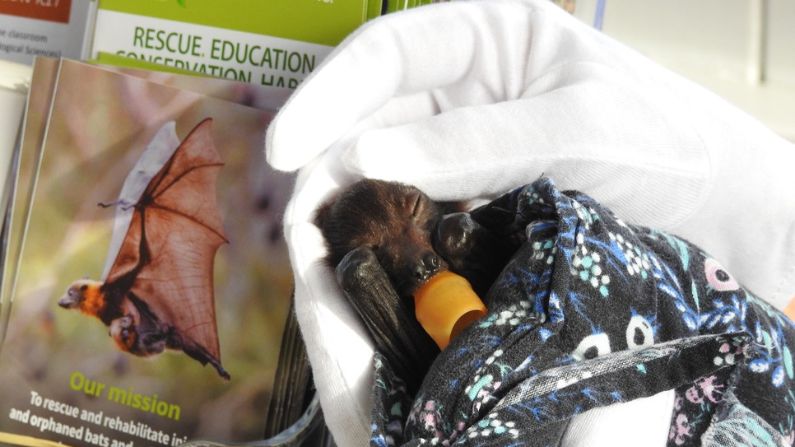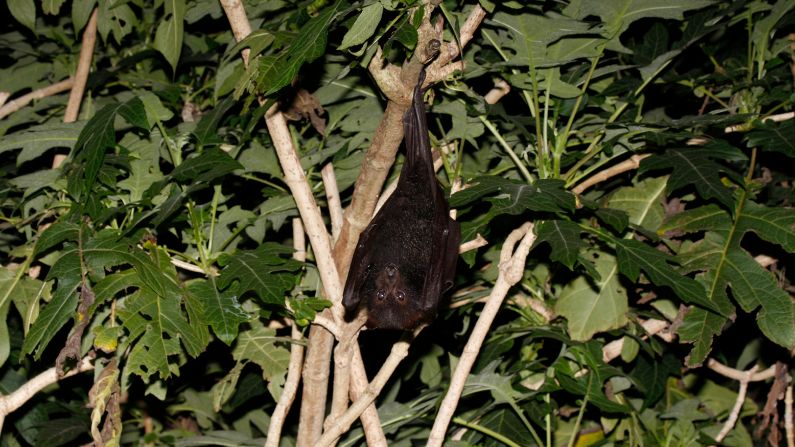Black flying-fox
© Bruce Thomson
The black flying-fox (Pteropus alecto) has the largest body size of the four mainland species of flying-fox in Australia — up to approximately 26 cm, and can weigh up to 1000 g. The species was first described by Temminck in 1837 from a specimen from Menado, Indonesia. In 1867, Peters described a black flying-fox from Rockhampton.
Quick facts
COMMON NAME:
Black-headed flying-fox
SCIENTIFIC NAME:
Pteropus alecto
FAMILY:
Pteropodidae
QLD CONSERVATION STATUS:
Least Concern
How we help flying-foxes
Every summer for more than 30 years, Wildlife Queensland’s Batty Boat Cruises have introduced thousands of people to the fascinating world of flying-foxes. This successful education initiative provides an opportunity for everyone to see flying-foxes in their natural habitat and learn why they are so important to our environment. Proceeds from the cruises fund bat conservation and support bat carers within Queensland.
 © Tamielle Brunt
© Tamielle Brunt
Did you know?
The black flying-fox can fly at 35 – 40 kilometres per hour.
 © Marc Newman
© Marc Newman
Threats to black flying-foxes
- Habitat loss
- Unregulated shooting for crop protection
- Powerlines and barbed-wire fences
Home range
- Groups will travel up to 50 km from their camps to foraging areas and will use the same camp for many years.
Distribution
- Black flying-foxes are found around the northern coast of Australia and inland wherever permanent water is found in rivers.
Description
- Jet black fur but some variation does occur
- Chocolate-brown patch of fur is often seen on the back of its neck and shoulders
- Brownish fur around eyes and on face
- Some have frosting of greyish tips all over their body, particularly on the belly
- The lower leg is unfurred
- Wingspan about 1m
- Average weight of 500–1000g
- Head–body length 230–280mm
Habitat
- Wide range of habitats of tropical and subtropical forests and woodlands.
Ecology
Life history and behaviour
- Black flying-foxes can live up to 20 years in the wild.
- During the day, black flying-foxes roost on tree branches in camps and fly out at dusk to feed.
- Main camps form in summer and may contain tens to hundreds of thousands of individuals, depending on local food availability.
- Can hold and manipulate food with clawed thumbs.
- They will wrap their wings around themselves if cold or wet.
Breeding
- In southern Queensland, adults mate in March and April. Females become pregnant before dispersing for the winter months.
- Congregate into camps from early to late summer where the young are born and raised.
- Young are carried by the female until about 4 weeks of age and then left at the roost while the mother forages at night.
- Young begin to fly at 8 weeks of age but depend on their mothers for at least 3 months.
Food
- Fly out at dusk to feed on blossoms and fruits.
- They prefer the blossom of eucalypts, paperbarks and turpentines, as well as a variety of other native and introduced blossoms and fruits.
- They have been seen to eat the leaves of trees by chewing the leaves into a bolus, swallowing the liquid and then spitting out the fibre.
More information
Publications & papers
- Hall, L. & Richards, R. (2000). Flying-foxes and fruit and blossom bats of Australia. Australian Natural History Series. UNSW Press.
- Menkhorst, P. & Knight, F. (2004) A Field Guide to the Mammals of Australia. Oxford University Press.



